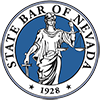Many companies have already started developing self-driving air taxis, but safety issues and concerns about the dangers these vehicles pose to passengers, people in buildings, pedestrians, motor vehicles, and commercial aircraft continue to be raised.
(Article continues below infographic)
![Safety Issues Are Raised as Driverless Flying Taxis Prepare for Takeoff [infographic] 1 Safety Issues Are Raised as Driverless Flying Taxi](https://mattsharplaw.com/wp-content/uploads/2023/04/Safety-Issues-Are-Raised-as-Driverless-Flying-Taxis-Prepare-for.jpg)
______
The Future of Driverless Air Taxis
Autonomous air taxis are currently under development, but safety concerns for people and the impact these vehicles will have on traffic patterns continue to pose issues. Propelled by advanced technology, eager investors, and frustrated drivers stuck in bumper-to-bumper traffic every day, fleets of self-driving air taxis could be hovering above city streets within the next decade. According to a new study by Deloitte, electric passenger drones, seating two to five passengers could be on the market within the next two years.
Aurora Flight services, owned by Boeing, has been developing autonomous vehicles since the late 1980s. The company’s portfolio boasts a number of flying vehicles, including an electric two-seat robotic helicopter known as eVTOL. Last year, Aurora developed a driverless flying taxi with Uber Technologies, a major player in autonomous technology. Aurora plans to transport passengers to various locations in autonomous flying taxis and claims that test flights could begin as soon as 2020. Airbus SE, a Boeing rival, completed its first test flight for autonomous flying taxis in January 2018.
Before self-driving flying taxis can take off, manufacturers and safety officials must figure out how to keep vehicles from crashing into each other, commercial airplanes, and buildings. This will require research and testing in sensor technologies and artificial intelligence. Without human pilots or aircrew, passengers will need to be protected from the uncovered rotor blades that will power most air taxis. The Federal Aviation Administration (FAA) will need to create regulations and safety standards, which currently do not exist. As long as the FAA and Congress do not rescind current safety standards for autonomous vehicles, manufacturers will have to prove to regulators that their robotic guidance systems will not create accidents and injuries.
According to Elon Musk, the CEO of Tesla and SpaceX, flying, self-driving cars are not the answer to current traffic and roadway problems. Musk states that flying cars will not ease traffic problems on the ground and will require runway-like areas to take off safely. Problems with increased noise, wind dangers, and proper maintenance can significantly impact traffic and passenger safety.









